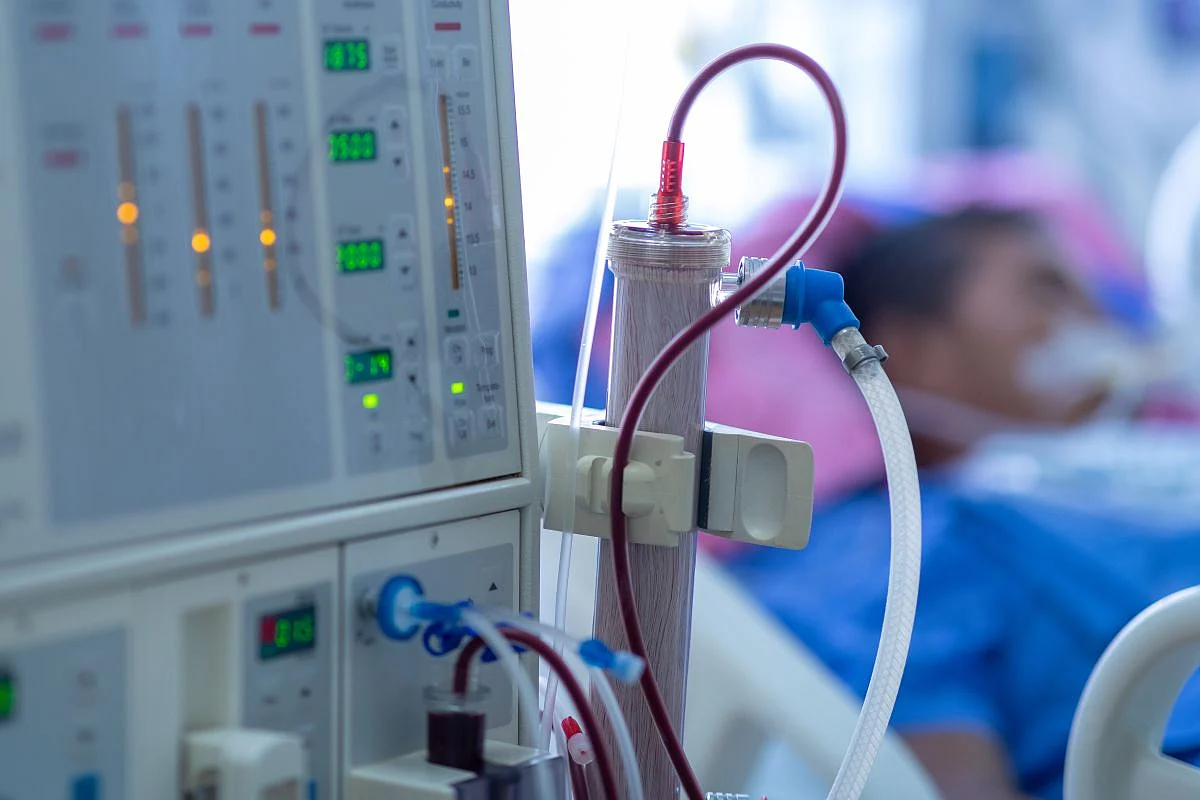Suboptimal Dialysis Initiation Common in Patients With Advanced CKD
By Elana Gotkine HealthDay Reporter
 via HealthDay
via HealthDayFRIDAY, July 25, 2025 -- Suboptimal dialysis initiation, typically defined as dialysis initiation during a hospitalization and/or with a central venous catheter, is common among patients with advanced chronic kidney disease (CKD) followed in multidisciplinary clinics, according to a study published online July 21 in Kidney360.
Amber O. Molnar, M.D., from McMaster University in Hamilton, Ontario, Canada, and colleagues conducted a prospective cohort study to examine risk factors for suboptimal dialysis among patients with advanced CKD followed in multidisciplinary kidney clinics. Suboptimal dialysis initiation was the primary outcome, defined by dialysis initiation during a hospitalization or with a central venous catheter in patients younger than 75 years.
Overall, 366 patients were included, and of these patients, 33 percent had a suboptimal dialysis start (69 percent of dialysis starts) during a median follow-up of 1.9 years. The researchers found that the risk for suboptimal dialysis initiation was lower in association with higher hemoglobin (adjusted hazard ratio, 0.96). Mean hemoglobin was 10.7 g/dL among those with suboptimal dialysis initiation. A higher risk for suboptimal dialysis initiation was seen in association with a higher comorbidity index and greater number of nephrologist visits within the past six months (adjusted hazard ratios, 1.17 and 1.70, respectively). There were no associations seen for measures of health literacy, kidney disease knowledge, or influenza vaccination with suboptimal dialysis initiation.
"In conclusion, we did not find easily modifiable patient-related risk factors for suboptimal dialysis initiation," the authors write. "The next best step is likely improved kidney failure risk prediction tools applicable to the advanced CKD population that use a timeline over which KRT (kidney replacement therapy) preparation typically occurs (i.e., 6-12 months) combined with starting KRT preparation sooner in high-risk patients."
Abstract/Full Text (subscription or payment may be required)
Disclaimer: Statistical data in medical articles provide general trends and do not pertain to individuals. Individual factors can vary greatly. Always seek personalized medical advice for individual healthcare decisions.
Source: HealthDay
Posted : 2025-07-26 06:00
Read more

Disclaimer
Every effort has been made to ensure that the information provided by Drugslib.com is accurate, up-to-date, and complete, but no guarantee is made to that effect. Drug information contained herein may be time sensitive. Drugslib.com information has been compiled for use by healthcare practitioners and consumers in the United States and therefore Drugslib.com does not warrant that uses outside of the United States are appropriate, unless specifically indicated otherwise. Drugslib.com's drug information does not endorse drugs, diagnose patients or recommend therapy. Drugslib.com's drug information is an informational resource designed to assist licensed healthcare practitioners in caring for their patients and/or to serve consumers viewing this service as a supplement to, and not a substitute for, the expertise, skill, knowledge and judgment of healthcare practitioners.
The absence of a warning for a given drug or drug combination in no way should be construed to indicate that the drug or drug combination is safe, effective or appropriate for any given patient. Drugslib.com does not assume any responsibility for any aspect of healthcare administered with the aid of information Drugslib.com provides. The information contained herein is not intended to cover all possible uses, directions, precautions, warnings, drug interactions, allergic reactions, or adverse effects. If you have questions about the drugs you are taking, check with your doctor, nurse or pharmacist.
Popular Keywords
- metformin obat apa
- alahan panjang
- glimepiride obat apa
- takikardia adalah
- erau ernie
- pradiabetes
- besar88
- atrofi adalah
- kutu anjing
- trakeostomi
- mayzent pi
- enbrel auto injector not working
- enbrel interactions
- lenvima life expectancy
- leqvio pi
- what is lenvima
- lenvima pi
- empagliflozin-linagliptin
- encourage foundation for enbrel
- qulipta drug interactions
